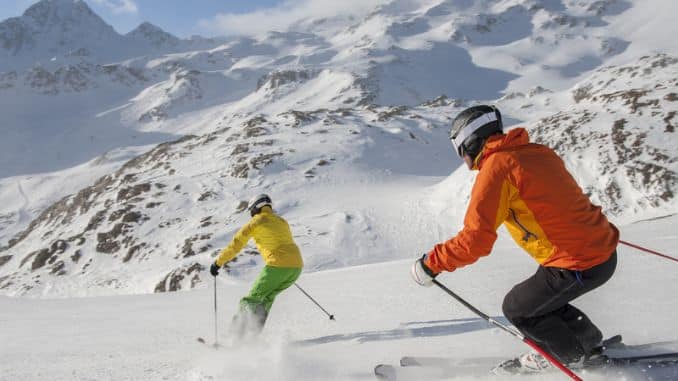Stretches after skiing are important for your muscle recovery and flexibility.
It helps reduce soreness, relieves tight muscles, and can make it easier to ski again the next day.
Stretching also helps keep your muscles and joints healthy, which reduces the risk of injury.
Make sure to focus on stretches for your legs, hips, and feet, especially after a long day on the slopes.
By stretching regularly, you can improve your overall flexibility and enjoy skiing and other winter sports with less discomfort.
Skiing can be very hard on our bodies, especially if it is one of the first days of the season. Stretching afterwards helps ensures you remain injury-free and are ready to hit the slopes again the next day.
1. Full Body Opener
- Begin in an upright standing position with your feet shoulder-width apart, maintaining good alignment with your head, shoulders and then hips.
- Bend through your hips and knees to move into a deep squat, and then raise up as you lift your arms overhead.
- After that, return to the starting position, and repeat the movement.
2. Wide-legged Forward Fold
- Begin in an upright standing position with your feet slightly wider than shoulder-width apart.
- For stretches after skiing, interlace your fingers and then place your hands behind your back.
- Bend your knees and then pivot through your hips to bend your upper body forward, maintaining good alignment with your head, shoulders, and hips.
- Release your hands and slowly let your upper body and head drop to the floor.
- Hold the position for 5 seconds.
- After that, slowly raise back up ending with your head to return to the starting position.
- Repeat the movement.
3. Standing Side Lunge
- To begin the 5 must-do apres-ski stretches, begin in an upright standing position maintaining good alignment with your head, shoulders, hips, and then legs.
- You can either place your hands at your sides or across your chest.
- Take a big step to one side with one foot then bend your knee to lower yourself into a side lunge position, extending your arms overhead at the same time.
- Return to the starting position, and then repeat the movement on the opposite side.
4. Foam Rolling the Quads
- Move over on your stomach, then go up onto your forearms for stretches after skiing.
- Prop yourself up on your toes keeping a straight line with your ankles, hips, and then shoulders.
- Position the foam roller just above the knee then roll through up into the hip area.
- Return to starting position, and repeat the movement on the opposite leg.
5. Lying Spinal Twist
- To begin the 5 must-do apres-ski stretches, lie on your back on the floor relaxing your upper body.
- For stretches after skiing, place both hands at your sides.
- Straighten one leg and then bend your other knee up towards your chest.
- Twist through the low back, pelvis, and then spine to bring your bent knee across your body to touch the floor.
- Hold this position for 5 seconds.
- After that, return to the starting position, and repeat the movement on the opposite side.
6. Arm Circles
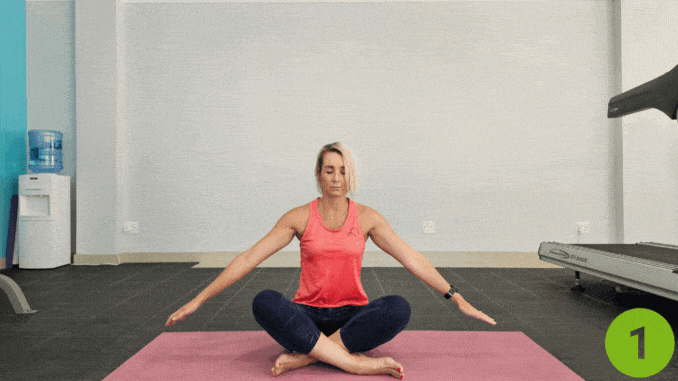
- Begin in an upright sitting position, maintaining good alignment with your upper body.
- Extend your arms out at your sides at shoulder height and open your chest.
- Engage your core and then move your arms in a large circular motion as part of your stretches after skiing.
- Repeat the movement.
7. Wall Push-ups

- Begin by standing upright a few steps away from a wall, keeping your feet shoulder-width apart.
- Maintain good alignment with your head, shoulders, and then hips.
- Place your palms flat on the wall at shoulder height, with your arms extended.
- After that, engage your core to stabilize your body during stretches after skiing.
- Inhale as you slowly bend your elbows and then lower your chest toward the wall, keeping your body in a straight line.
- Exhale as you press through your palms to return to the starting position.
- Repeat the movement for 10-12 reps.
8. Seated Forward Fold

- Begin in an upright sitting position on a pillow with your legs extended in Infront and your toes facing upwards, maintaining good alignment with your head, shoulders, and then hips.
- For stretches after skiing, place a pillow on top of your upper legs.
- After that, engage your core and hinge through your hips to bend your upper body forward, placing your forehead on top of the pillow while your hands extended and holding your ankles.
- Then, hold the position for several deep belly breaths, in through your nose and out through your mouth.
9. Standing Quad Stretch
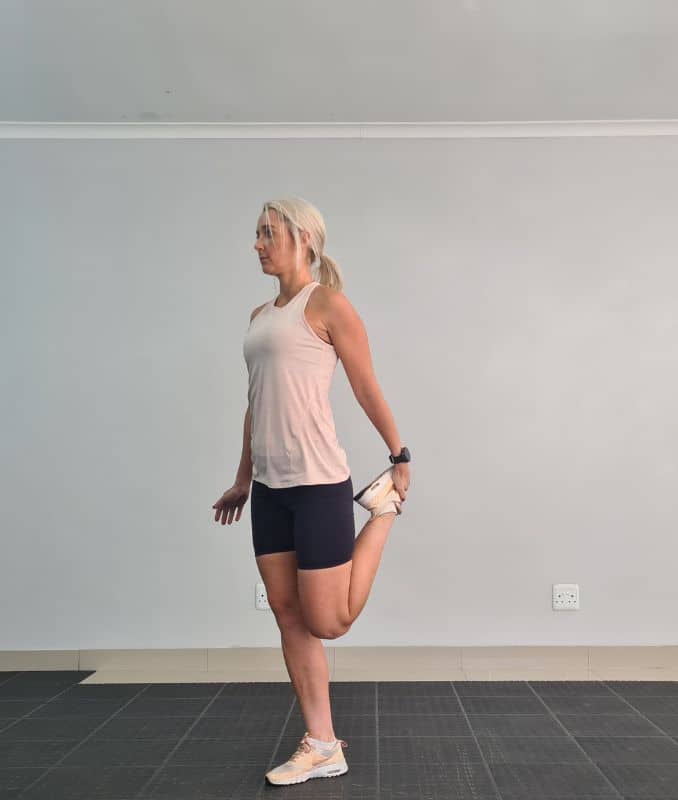
- Begin in an upright standing position, maintaining good alignment with your head, shoulders, and then hips.
- Stand on one leg and then grab your other ankle with your hand.
- Pull your ankle gently towards your buttocks as part of stretches after skiing.
- Hold this position for 20-30 seconds, maintaining balance and then keeping your core engaged.
- Return to the starting position and switch legs to repeat the movement on the opposite side.
10. Child’s Pose

- Begin in an upright kneeling position in front of the pillow with your knees wider than shoulder-width apart.
- After skiing stretches, tighten your abdominal area.
- Shift your hips back to your feet, lower your upper body to the pillow and then extend your arms overhead.
- Lower your forehead to the floor, relaxing your mid-back area for a light stretch.
- Take several deep belly breaths, in through your nose and then out through your mouth.
- Relax and return to an upright sitting position.
11. Hamstring Wall Stretch
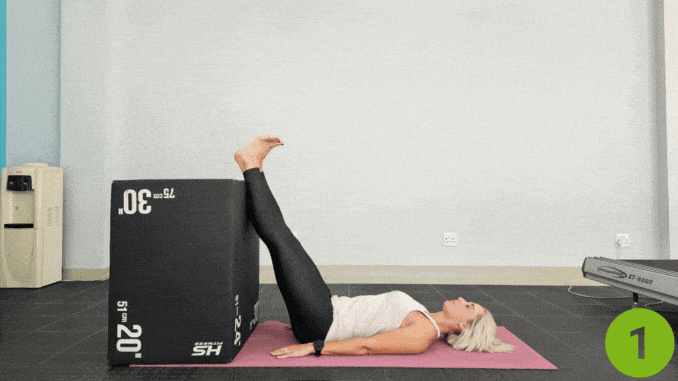
For this exercise, utilize the use of the wall, for support if needed.
- Lie on your back, knees bent, with feet flat on the floor in front of the wall or counter.
- Engage your core.
- Lift both legs and place your feet to the wall closed together.
- For stretches after skiing, place your hands beside your body or on your belly.
- Hold this position for several deep belly breaths, in through your nose, out through your mouth.
- Return to the starting position and repeat the movement.
12. Seated Forward bend
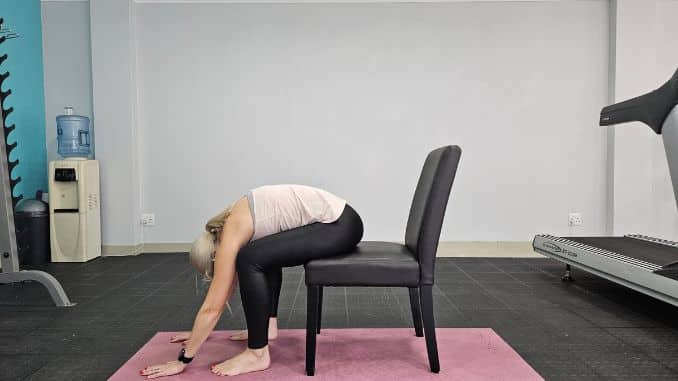
For this exercise, utilize the use of a chair, for support if needed.
- Begin in an upright sitting position on the edge of the chair, with your legs extended and hip-width apart, maintaining good alignment with your upper body.
- Place both hands at each side of the chair, for support.
- After that, engage your core.
- Hinge at your hips while keeping your back straight.
- Hold this position for several deep belly breaths, in through your nose and out through your mouth.
13. Standing Calf Stretch
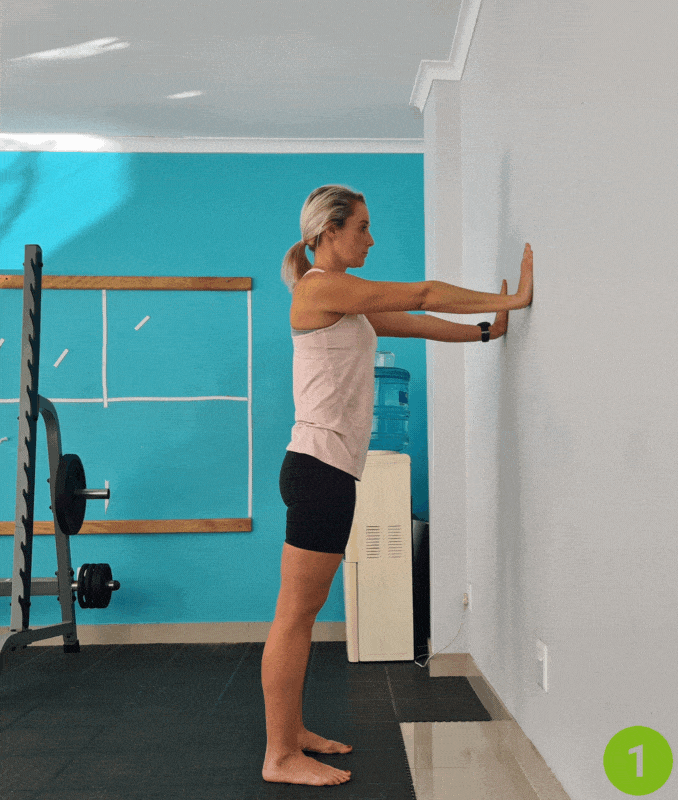
For this exercise, you can use the wall for support if needed.
- Begin in an upright standing position facing the wall, with your feet hip-width apart.
- Maintain good alignment with your head, shoulder, hips, and legs.
- Place both hands on the wall.
- Engage your core and take a step back with your one foot.
- Keep the back leg straight and the heel flat on the floor.
- Bend the front knee and lean towards the wall, feeling the stretch in the back leg.
- Hold this position for several deep belly breaths, in through your nose and out through your mouth.
- Repeat the movement with your opposite knee.
14. Pigeon Pose Stretch
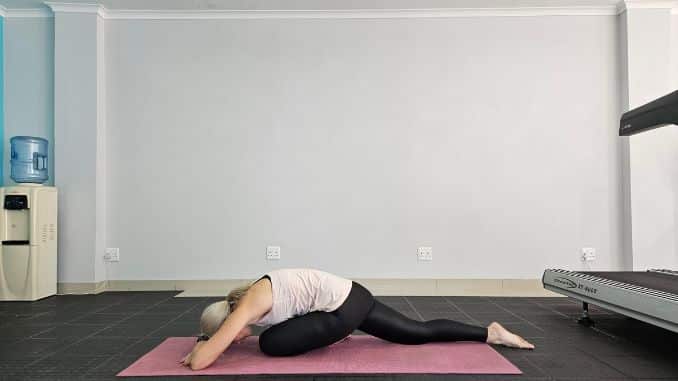
- Move into a straight-arm plank position, maintaining good alignment with your head, shoulders, hips, and toes.
- Bend one leg in front of your body, bringing your knee up to your elbow and your ankle against your hip on the opposite shoulder.
- Slowly walk your hands out before you, bringing your upper body to rest over your bent knee and your head facing the floor.
- Hold this position for a couple of seconds.
- Take several deep belly breaths, in through your nose and out through your mouth.
- Raise yourself back up to return to the starting position and then repeat the movement on the opposite side.
15. Seated Spinal Twist
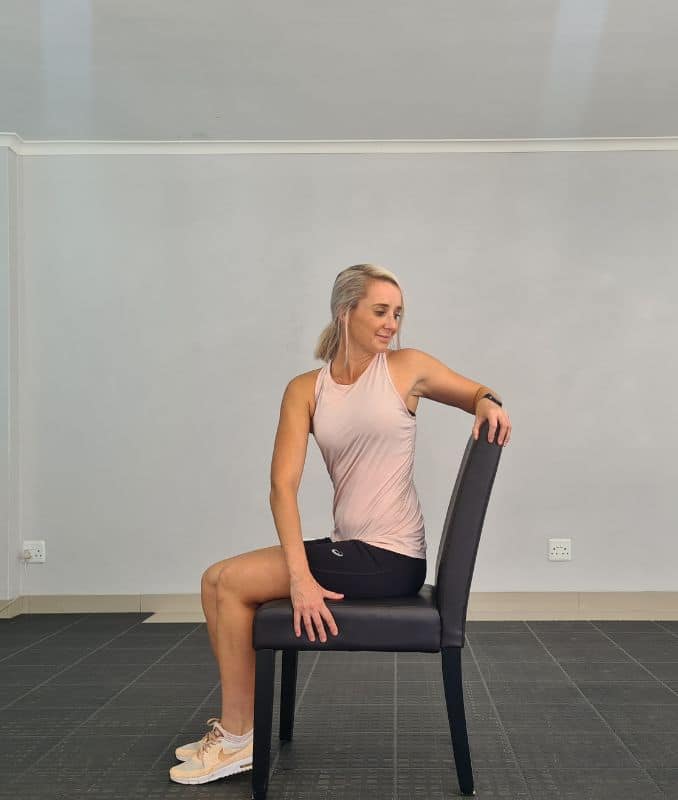
- Begin in an upright sitting position, maintaining good alignment with your head, shoulders, and hips.
- Hold onto the seat of your chair with one hand for support.
- Contract your core and bend your upper body to the side, reaching over your head with your other arm while keeping your seat firmly flat on the chair.
- Hold this position for several deep belly breaths, in through your nose and out through your mouth.
- Return to the starting position and repeat the movement on the opposite side.
16. Cat-cow Stretch

- Begin in a 4-point position with your hands beneath your shoulders and your knees under your hips.
- Inhale and contract your abdominal area.
- Exhale and slowly round out your mid-back as you drop your head downward.
- Then alternate by inhaling as you slowly lift your head and arch your mid-back.
- Repeat the movement, alternating directions.
17. Hip Flexor Stretch
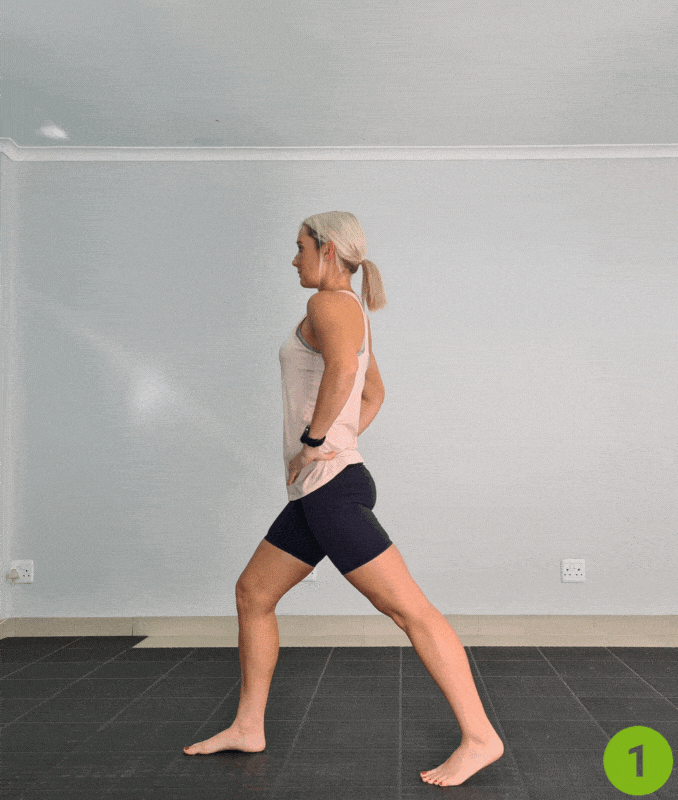
- Begin in an upright standing position with your feet shoulder-width apart.
- Step your right leg forward into a lunge position, bending your right knee forward while keeping your left leg straight behind you.
- Gently lower your left knee towards the floor, ensuring your hips are facing forward and keep your left leg bent.
- You should feel a stretch in your left hip flexor.
- Make sure your left hip is aligned and your core is engaged to support your back.
- Hold this position for several deep breaths, in through your nose and out through your mouth.
- After holding the stretch, switch legs, stepping the left leg forward and gently lowering the right knee towards the floor.
- Repeat the movement on the opposite side.
Suggested Stretches for Skiers
Studies on stretching before and after skiing show that while the effects are modest, both stretching and exercise can play a role in preventing soreness and promoting recovery.
Stretching before skiing helps prepare your muscles, while stretching after skiing may help reduce muscle soreness.
However, it’s important to note that exercise and proper conditioning are also crucial in preventing injuries.
Proper warm-up and strengthening exercises, alongside stretching, can help prepare your body for skiing and enhance recovery afterward.
Stretching is helpful, but it’s most effective when combined with overall fitness and recovery practices.
Here’s a story of a skier and the exercises he did to recover.
This skier hurt his knee during a fall while skiing, tearing his meniscus, rupturing his ACL, and breaking his tibia. After months on crutches and not enough physical therapy, he looked for exercises to help him heal and get stronger. His goal was to fully recover and get back to skiing at a high level, including doing big jumps and drops.
Post-Ski Stretching
Post-ski stretching helps your muscles recover and stay flexible, easing tired muscles and preventing knee pain.
Stretching after skiing boosts blood flow, reduces soreness, and makes it easier to ski again the next day.
Focus on gentle stretches for your hips, calves, and hamstrings to stay injury-free and improve flexibility.
Regular stretching helps with overall mobility, making it easier to enjoy other winter activities.
Muscle Fatigue from Skiing
After skiing for a while, your muscles get tired. [1]
This tiredness comes from two places:
- Central Fatigue: It starts in your brain and nerves, making it harder to control your muscles.
- Peripheral Fatigue: It happens in your muscles themselves, which struggle to work properly.
Why Stretching Matters
When muscles are really tired, your form can get sloppy, which increases the chance of falling or getting hurt.
Stretching after skiing helps your muscles relax and recover, reducing fatigue and the risk of injury.
To reduce DOMS [2], the study suggests that skiers engage in exercises before the season to prepare their muscles.
These exercises focus on eccentric contractions—similar to the muscle work done during skiing—such as downhill running, deep knee bends, or jumping exercises.
These activities will help prepare the muscles for the demands of skiing and reduce soreness later.
Common Mistakes to Avoid
- Don’t bounce or force your way into stretches, as this can cause injury and reduce flexibility.
- Don’t stretch cold muscles, as this can cause injury and reduce effectiveness.
- Don’t skip warming up and cooling down, as this can cause injury and reduce performance.
- Don’t neglect to stretch regularly, as this can reduce flexibility and increase the risk of injury.
- Don’t forget to listen to your body and take regular breaks to rest and recover.
Conclusion
After skiing, make stretching and recovery a priority to reduce soreness and improve flexibility.
Include stretches for your upper body, legs, hips, core, and back.
Pay attention to your technique and listen to your body to avoid injury.
A fitness pro or therapist can help create a routine for you.
Be patient and stay consistent – flexibility takes time.
Discover the 11 Daily Stretches that will help you release tension, improve posture, and boost your confidence—inside and out. Add these simple moves to your routine and start looking and feeling amazing every single day.
FAQs
Should I stretch after skiing?
Yes, stretching after skiing helps your muscles relax and recover. Focus on gently stretching your legs, hips, and feet to prevent soreness. For example, stand tall, step forward with your left leg, and gently pull your left foot forward while keeping your hips forward to stretch your hip flexors and hamstrings.
How do you recover faster after skiing?
To recover faster, make sure to stretch gently, hydrate, and give your body time to rest. Stretch your right leg and left leg, focusing on your knees, calves, and hips. Stretching your right foot and left foot will also help.
How to loosen calves after skiing?
To loosen your calves, stand tall with your legs straight. Step one foot back, keeping the heel of the back foot pressed into the ground and the back leg straight. Gently bend your front knee and lean forward slightly to feel a stretch in the calf of the back leg. Switch legs and repeat. This will help stretch and relax your calves.
How do you stretch your feet after skiing?
To stretch your feet, gently pull your right foot forward, keeping the knee bent. You can also stretch your left foot by pulling it gently, making sure your hips are forward. This helps relax the muscles in your feet after being in ski boots.

